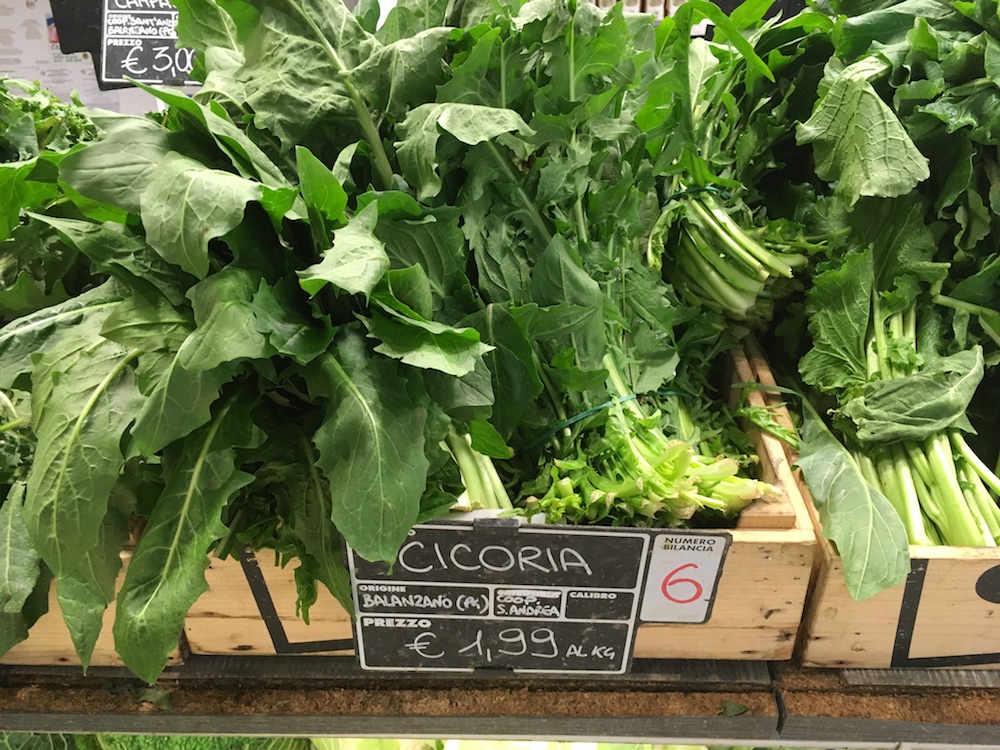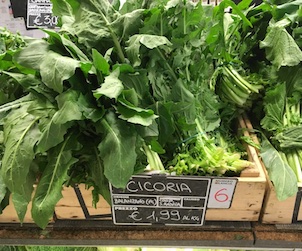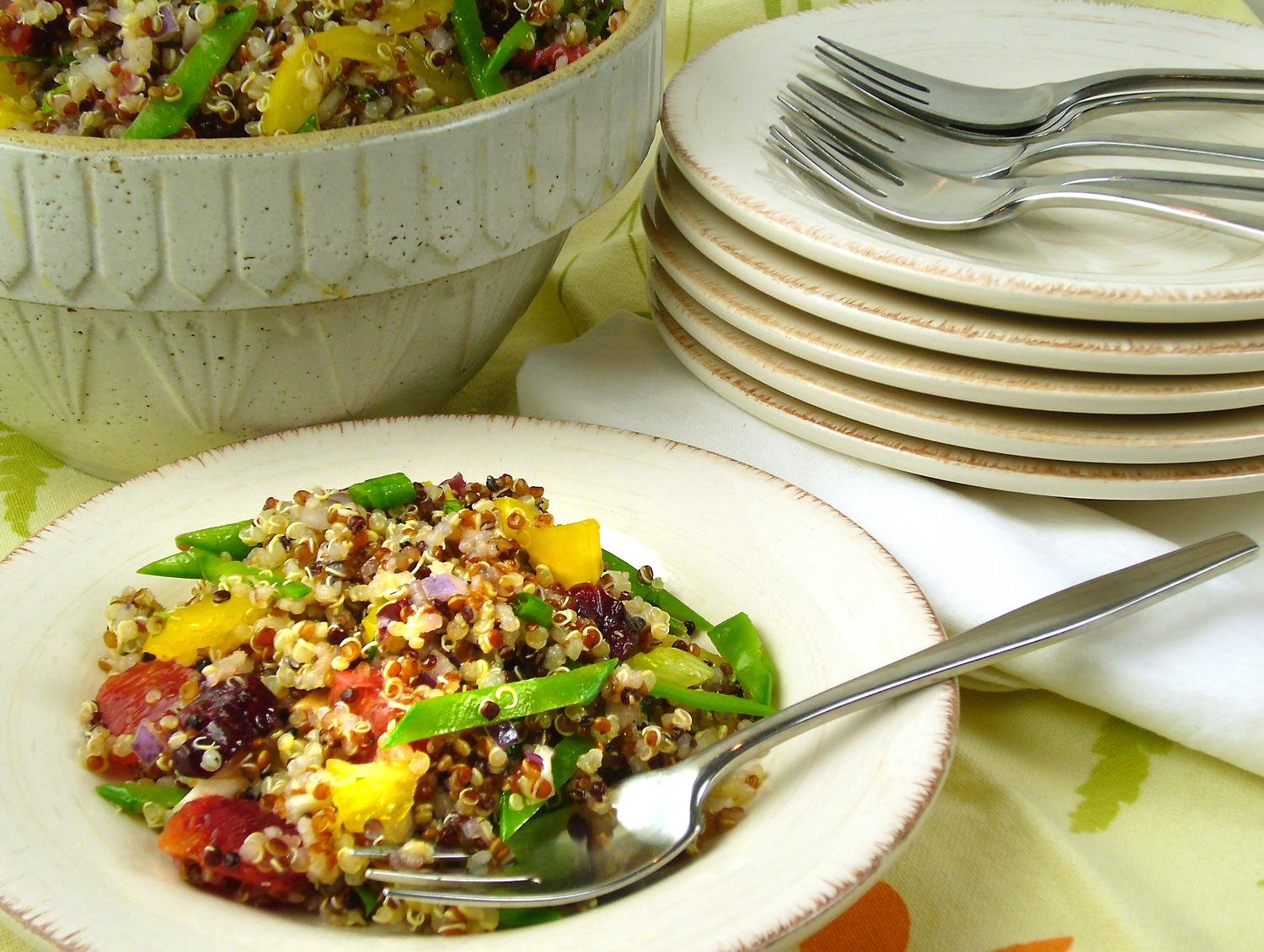Malcolm Jolley says enough with salad in winter, he wants dark, leafy greens on the side.
 I am dreaming a lot lately of Italy. And a lot of these dreams include verdura: bitter leafy greens that are served there as a cotorno, or side dish (on the menu they take the plural form of cotorni, the dishes that are places around the main plate). They especially seem to go well with dark, grey winter days, and in my humble opinion suit the weather far better than the ubiquitous, and cold, side salad.
I am dreaming a lot lately of Italy. And a lot of these dreams include verdura: bitter leafy greens that are served there as a cotorno, or side dish (on the menu they take the plural form of cotorni, the dishes that are places around the main plate). They especially seem to go well with dark, grey winter days, and in my humble opinion suit the weather far better than the ubiquitous, and cold, side salad.
It’s a great compensation of this job that I occasionally get to dine with my heroes. One of which is Signora Rachel Roddy, of the Guardian newspaper, who my wife and I met for lunch when we were in Rome last November. We ordered two servings of verdure to gowith our lunch, because there was no way we were going to stretch one among three. We ate them all.
Signora Roddy is both an established Roman of nearly 20 years and has been adopted into the Sicilian of her partner. Here’s how she describes the typical Roman way of treating dark leafy greens:
Verdura strascinata o ripassata (Greens with garlic and chile)
Another way of serving greens is strascinata, which is Roman for ‘dragged’, a word that can also be used to describe the way you get a small boy to leave a playground. Strascinata refers to the habit of dragging or sautéeting boiled or steamed in olive olive oil scented with garlic, and possibly chile. It’s also known as ripassata or ‘ripassed.’ It’s an extremely simple technique that works well with most leafy green vegetables, the garlic working like a strong outline, giving the vegetables a sharper definition. – Rachel Roddy, My Kitchen In Rome (2016)
It’s not that there aren’t greens here. It’s just that they’re mostly a little bland and boring. The greens here in North America are really thick stemmed, or have super thick leaves, or flouncy and gritty spinach. None of these chards, kales, or Texas rapini’s are particularly unsavoury. It’s just that it’s hard to get to excited about them after heavy rotation through ourlong winter. Also, they are reliably a bit of a production. I mean ‘a production’ in the way that they need to be purposefully eaten. For instance cavalo nero, lacinto kale, is great in soup, if it’s been (even clumsily) chiffoned, otherwise it’s so tough that it’s really better for goats than people, in my ever-so-humble opinion. (Can you tell that this winter and not being in Italy has made me cranky?)
 In Italy, especially around Rome, greens are neither boring or (blessedly) remarkable. They just are. Cooked up into spindly bits with garlic and sometimes (we certainly hope) chilies, sautéed bitter greens, like cicoria (chickory) are just expected, delicious, and easy going down. And why shouldn’t they be here? Especially over our long, cold, spirit taking winters? Why on Earth are we eating salads in January in this country when we could be eating our greens warm? It’s silly. It ought to be a side of fries, or a side of garlic and chile sautéed something, deep green and good.
In Italy, especially around Rome, greens are neither boring or (blessedly) remarkable. They just are. Cooked up into spindly bits with garlic and sometimes (we certainly hope) chilies, sautéed bitter greens, like cicoria (chickory) are just expected, delicious, and easy going down. And why shouldn’t they be here? Especially over our long, cold, spirit taking winters? Why on Earth are we eating salads in January in this country when we could be eating our greens warm? It’s silly. It ought to be a side of fries, or a side of garlic and chile sautéed something, deep green and good.

One ray of hope are the Toronto’s Chinese grocers. I mean the real ones on Gerrard or Spadina, or in the suburbs or TNT. They seem to reliably stock a number of variants of gai lan, or Chinese broccoli. Or pea shoots – they would certainly do, especially with a bit of garlic, and maybe a splash of soy. Fuchsia Dunlop has said that nearly all Chinese meals include a dish of stir fried greens of some descritpion. She has also written that this most civilized and ancient gastronomic culture(s) finds raw foods, like salad, anathema. I am tending to agree, at least until I have a few more dishes of greens.
Stay leafy.







